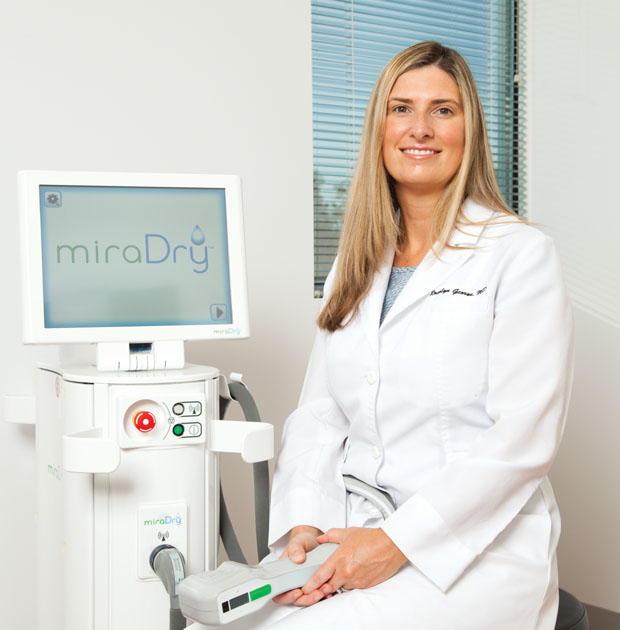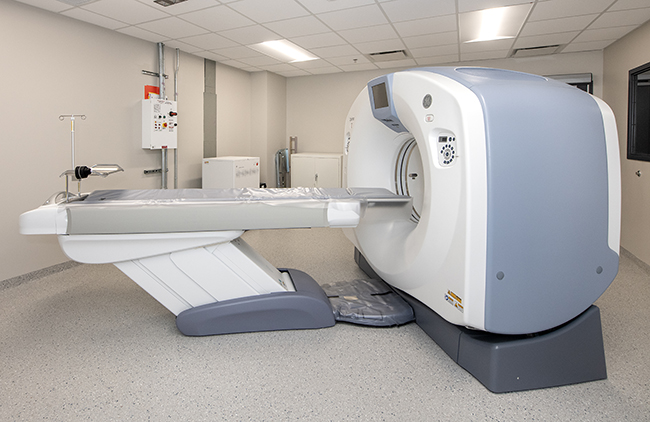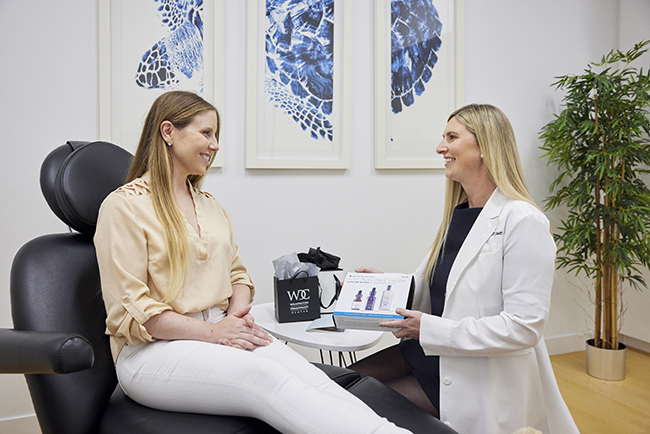Sweat Elimination
12 Jul 2014
Dr. Rosalyn George explains the new noninvasive procedure that permanently eliminates sweat glands from the underarm area
By TERESA A. MCLAMB Photos by KELLY STARBUCK

In our active beach environment, clothing materials of choice include linen, cotton and silk. They’re cool and breathable. They’re stylish. As soon as spring and the Azalea Festival roll around, flowing linen dresses and silk shirts come out of the closet.
That’s also about the time the weather warms up, and we begin to perspire more. Perspiration is mostly water, but it also contains minerals, lactate and urea – all substances that easily stain clothes. Humans have two to four million sweat glands. Most of us only notice those in our arm pits, although a few people notice sweaty feet and hands. Other primates and horses also have armpits that sweat like those of humans. It is not rare for a horse to develop a condition in which he cannot sweat and must be moved out of our environment to one in which the outdoor air temperature is much cooler.
While heat, particularly from exercise, causes an increased perspiration level, so can stress. In humans, there is a condition known as focal hyperhidrosis or excessive sweating in certain regions such as the underarms, soles, palms, face or groin. In the past, prescription antiperspirants were used with some success as was the injection of Botox which temporarily decreased sweating.
A recently introduced procedure, called MiraDry®, can permanently eliminate underarm sweating while also eliminating the growth of underarm hair. It also reduces the odor caused by underarm sweating.
Utilizing an electrical current, or microwave, the procedure kills the sweat gland, according to Dr. Rosalyn George of Wilmington Dermatology Center. “People think it’s not a big deal, but some people’s sweat glands don’t turn off. It’s embarrassing. It can inhibit them socially and in the work place,” Dr. George said.
Underarm sweat is about 3% of what the body produces to cool itself. “The procedure is completely safe and noninvasive,” she said. The procedure takes about an hour. “There is some swelling but nothing that would keep you from your normal activity.” Two treatments based three months apart are required. It costs $3,000 and insurance does not cover it, she said. “They consider it a cosmetic procedure even though this is a medical condition.” Botox treatments, which last about six months, cost $1,000 to $1,500 per treatment. Those who would like some solution, but at a reduced price, can try the prescription antiperspirant which is usually covered by insurance, she said.
Dr. George said that anyone who doesn’t want to sweat under their arms is a candidate. “I have patients who wear a lot of white silk and don’t want to sweat and cause stains. Of course, anyone with excessive sweating is a candidate.”
The procedure requires people to shave beforehand. After measuring the armpit, Dr. George draws a temporary tattoo on the treatment area. After treatment with the microwave, she recommends icing for several days. “The treated area feels like there’s a golf ball under the arm, and that can last a couple of weeks,” Dr. George said.
She notes that the procedure is expensive, but it is a permanent solution and there’s a very high satisfaction rate from patients. “Reduction in dry cleaning costs will make up for it,” she said.
Thus far, treatment is only approved for the armpit. Study is underway for other body parts, but the microwave’s effect on nerves must be thoroughly investigated.
Since setting up shop in Wilmington six years ago, Dr. George has practiced general, surgical and cosmetic dermatology. She is concerned about the rising rate of skin cancer, not just in Wilmington, but everywhere. “Use of tanning beds has served to boost the number of cases, but in our beach community, our constant exposure to the sun makes us at risk,” she said. Skin cancer can appear on any part of the body. “We know that since tanning beds were introduced in the 1970s, the rate has skyrocketed. We are seeing this whole generation of people who didn’t use sunscreen, and they’re getting a lot of it. Melanoma is the number one cancer that kills people in their late 20s, but you see it in all ages now. The number one thing is protecting yourself from the sun. Use an SPF30 sunscreen on a daily basis.”
Sunscreen should be applied twenty minutes before going outdoors and reapplied every two hours. “But that’s not the only thing. Wear a rash guard, sit under an umbrella, wear a hat. If you leave at six in the morning to fish and fish all day, you have to have some extra protection.”
Psoriasis and acne are the next biggest issues Dr. George sees in her practice, and she notes there have been solid innovations in the treatment of psoriasis in the past ten years including injections that suppress the part of the immune system that is causing the disease.
A graduate of Virginia Tech and the School of Medicine at the University of Virginia, Dr. George did her residency at Penn State. She said she knew from the time she was eight that she wanted to be a doctor. Searching for a place to open her practice, she and husband, Ed, fell in love with the coast and the friendliness of the people when they visited Wilmington. The decision proved to be a good one as the practice continues to expand. 910-256-4350, wilmingtondermatologycenter.com














